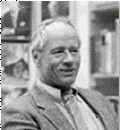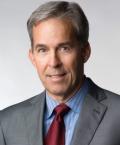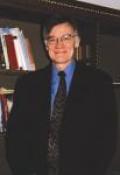Masks and "social distancing" are nothing new. Over the centuries, Americans have suffered terribly from smallpox, yellow fever, cholera, typhoid, pellagra, influenza, polio, and other pandemics.
As Covid-19 threatens to push millions of Americans into poverty, we can look to the past for lessons on how to deal with a pandemic.
The numbers are already grim. Worldwide, over 27 million have contracted Covid-19; nearly 875,000 have died from it.
During George Washington’s first term, an epidemic killed one-tent of Philadelphians, which was the capital of the young United States.
Editor’s Note: Stephen Fried is a journalist and bestselling historian.
Toward the end of World War I, American doctors fought an invisible enemy on the home front — a pandemic that would kill more people than any other outbreak of disease in human history.
Editor's Note: John Barry is the author of The Great Influenza: The Epic
As much as nine-tenths of the indigenous population of the Americas died in less than a generation from European pathogens.
In the summer of 1605, the French explorer Samuel de Champlain sailed along the coast of New England, looking for a likely spot to place a colony — a place more hospitable than the upper St. Lawrence River, which he had previously explored.
A murderous disease was ravaging the south in 1914. Then one brave and determined doctor discovered the cure — and nobody believed him.
Polio’s legacy to those who survived it includes uncommon stamina and courage and one grim new joke.
Some years ago, I traveled to Boston to meet for the first time the filmmaker Henry Hampton, who had just completed the magisterial “Eyes on the Prize” series for PBS.
The emergence of AIDS has added new urgency to the work of an organization that turns eighty this year
It is not exactly a historical secret that sex is here to stay. But it is only in relatively recent times in this country that sexual behavior has been so openly described, depicted, and debated in the public forum.
Mary Mallon could do one thing very well, and all she wanted was to be left to it.
Longfellow notwithstanding, precious few of us leave footprints in the sands of time.
In the past 70 years, while several major diseases have been eradicated, one has risen from obscurity to take its place among the nation’s leading killers.
The patient at Barnes Hospital in St. Louis in 1919 might have wondered during his last days why all the physicians were so peculiarly interested in his case. When the man died, Dr.
A disease that no one understood laid waste a major American city. Five thousand died in two months, and Memphis was never the same again.
In 1878, not long after Reconstruction ended, Memphis appeared likely to emerge from the ashes of Confederate defeat as one of the regal cities of the New South.
American medicine in a crucial era was at once surprisingly similar and shockingly different from what we know today. You could get aspirin at the drugstore, and anesthesia during surgery. But you could also buy opium over the counter, and the surgery would be more likely to be performed in your kitchen than in a hospital.
IN 1884 ALMOST three-quarters of America’s fifty million people lived on farms or in rural hamlets.
The mysterious diseases that nearly wiped out the Indians of New England were the work of the Christian God — or so both Pilgrims and Indians believed.
In December of 1620, a group of English dissenters who “knew they were pilgrimes,” in the words of William Bradford, stepped ashore on the southern coast of Massachusetts at the site of the Wampanoag Indian village of Pawtuxet.
It became apparent that this influenza was a first-rate killer.
In the last week of October, 1918, 2,700 Americans died “over there” in battle against the kaiser’s army. The same week 21,000 Americans died of influenza in the United States.
Why did people fall mortally ill wherever she worked? Typhoid Mary was not about to help the inspector find out
On August 27, 1906, the daughter of Charles Henry Warren, a New York banker, fell sick at the family’s rented summer house in Oyster Bay, Long Island.
Underschooled and ill-equipped, the men who attended the pioneers practiced a rugged brand of medicine—but they made some major advances all the same
At every step in the trek westward, America’s pioneers found an enemy more ubiquitous, more stealthy, and more deadly than the Indians, yet in our histories we tend to forget this dread opponent. It was, quite simply, disease.
The causes of the cholera epidemic of 1832 were wholly incomprehensible to the people of the time.
It would of course be comforting to think that this moral obtuseness was peculiar to Englishmen. It seems, however, to have been prevalent in America as well, and the cholera epidemics of the last century bring the thing into focus.
In Boston, where one in six was dying of the plague, the great preacher battled for a new and radical idea.
“The Town is become almoft an Hell upon Earth, a City full of Lies, and Murders, and Blafphemies, as far as Wifhes and Speeches can render it fo: Satan feems to take a ftrange Pofsession of it, in the epidemic Rage, againft that notable and powerful
Yellow fever killed 4,000 in Philadelphia in 1793, and puzzled doctors ignored the real clue to blame “miasmata” in the air.
Late in the evening of August 21, 1793, Dr. Benjamin Rush, Philadelphia’s most prominent physician, sat down “much fatigued” to write to his wife to inform her that a “malignant lever” had broken out on the city’s water front.





